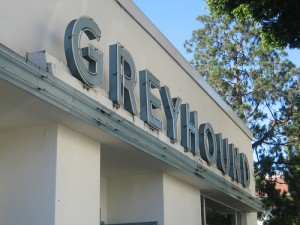 San Francisco is an important city in California, famous for architecture, scenic beauty and the cultural and ethnic diversity. The Golden Gate is a landmark recognized all over the world.
San Francisco is an important city in California, famous for architecture, scenic beauty and the cultural and ethnic diversity. The Golden Gate is a landmark recognized all over the world.
Santa Barbara is perfect for a day trip from Los Angeles , but is also an excellent side trip for those visiting the entire state of California. It is well known for its beaches, shopping options and wineries.
Quick summary
The cheapest option for traveling between San Francisco and Santa Barbara is by bus. Single fares start at $57.15* and the journey takes about 9 h.
There isn’t a direct rail link between the two cities, so you need to go via Oakland (for the shortest route) and travel by bus and then by train. The fare is almost double than the bus fare.
Flights are excluded as option as there is only one carrier operating on the route and the fares are very high.
Flights from San Francisco (airport code: SFO) to Santa Barbara
San Francisco International (SFO) is one of the largest airports in the world and handles both international and domestic travel.
Santa Barbara is served by Santa Barbara Municipal Airport (SBA), which handles about 30 daily flights to/from US cities. Flights from San Francisco are operated only by United Express. The flight time is 1h 20 min.
Direct single fares start at $400 one way in late December 2011 and mid-March 2012. Indirect flights start at $120 one way.
Trains and buses from San Francisco to Santa Barbara
Amtrack offers connections for only part of the route between the two cities, as San Francisco is not served by a train station. So you need to take the bus and the train to travel from San Francisco to Santa Barbara.
There are two possible routes to choose from:
Route 1:
Step 1: San Francisco Caltrain Station to Oakland Jack London Square by bus
The bus leaves San Francisco at 7 a.m. The layover time is 25 min
Step 2: Oakland to Santa Barbara by train
The train leaves Oakland at 8:50 a.m.
The total travel time (excluding the layover) is 10 h 52 min. The single adult fare is $96.
Route 2:
Step 1 : San Francisco Caltrain Station to Emeryville, CA by bus
The bus leaves San Francisco at 8:45 a.m. The layover time in Emeryville is 10 min.
Step 2 : Emeryville, CA to Bakersfield, CA by train
The train leaves Emeryville at 10:15 a.m. The layover time in Bakersfield is 9 min.
Step 3 : Bakersfield, CA to Santa Barbara by bus
The bus leaves Bakersfield at 4:20 p.m.
The total travel time (excluding layovers) is 10 h 29 min. The single adult fare is $96.
Buses from San Francisco to Santa Barbara
Greyhound operates three direct buses per day between San Francisco and Santa Barbara. The travel time is between 8 h 40 min and 9 h 5 min. The web only single adult fare is $57.15.
The buses leave San Francisco at: 5:20 a.m., 10:30 a.m. and 9 p.m. The only direct bus leaves Santa Barbara at 8:55 a.m. and takes 9 h 20 min to get to San Francisco. Three other indirect buses (via Oakland and San Jose, respectively) leave during the day. Regardless of the route chose, the same fares as above apply.
Driving from San Francisco to Santa Barbara
You can rent a car and drive the 337 miles between San Francisco and Santa Barbara on US-101 S. You should be able to cover the distance in 5 h 45 min but do make sure to plan some stops along the way.
Note: *at the time the article was written
 San Diego is the second largest city in California and is well known for the excellent weather, beaches, the famous Zoo and quick access to the Mexican border and Tijuana. San Diego offers a lovely escape from the hustle and bustle of
San Diego is the second largest city in California and is well known for the excellent weather, beaches, the famous Zoo and quick access to the Mexican border and Tijuana. San Diego offers a lovely escape from the hustle and bustle of 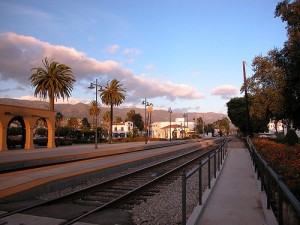 “Riviera of the West” or Santa Barbara is perfect for a day trip from
“Riviera of the West” or Santa Barbara is perfect for a day trip from 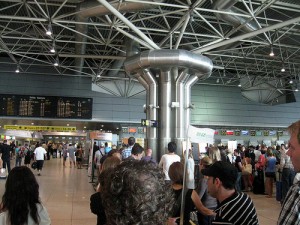
 While most people think of Porto (or Oporto) as straddling the Douro river, that’s actually incorrect. Porto is located on the north side of the Douro while the south side, where the port houses are located, is actually called Vila Nova de Gaia. The two cities are connected by a bridge which carries cars, a tram and pedestrians over the river.
While most people think of Porto (or Oporto) as straddling the Douro river, that’s actually incorrect. Porto is located on the north side of the Douro while the south side, where the port houses are located, is actually called Vila Nova de Gaia. The two cities are connected by a bridge which carries cars, a tram and pedestrians over the river.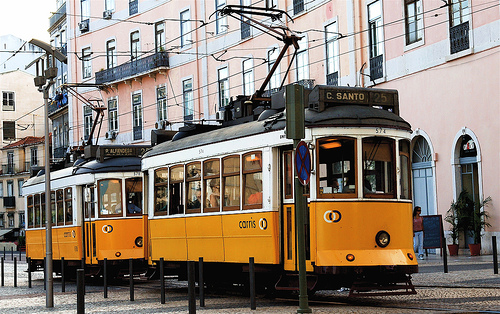 Central Lisbon is relatively compact and easy to navigate. Set on seven hills, the city streets are a mix of wide open lanes and narrower, steep cobblestone streets. With old tram cars rattling past modern buses, the transportation options are equally diverse. Here’s what you need to know about getting around in Lisbon.
Central Lisbon is relatively compact and easy to navigate. Set on seven hills, the city streets are a mix of wide open lanes and narrower, steep cobblestone streets. With old tram cars rattling past modern buses, the transportation options are equally diverse. Here’s what you need to know about getting around in Lisbon. Croatia has been on the tourist radar for some years, but despite the alluring pictures of stunning blue waters, beautiful beaches, and Roman ruins it still hasn’t been completely overrun by people visiting on a European tour. There’s every reason to include Croatia on your next trip to Europe – the great bargains being only one – that it’s frankly a little surprising that more travelers don’t visit Croatia each year.
Croatia has been on the tourist radar for some years, but despite the alluring pictures of stunning blue waters, beautiful beaches, and Roman ruins it still hasn’t been completely overrun by people visiting on a European tour. There’s every reason to include Croatia on your next trip to Europe – the great bargains being only one – that it’s frankly a little surprising that more travelers don’t visit Croatia each year.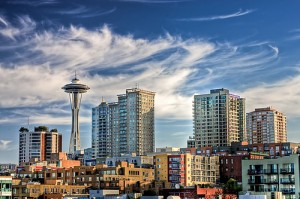 Alaska is one of two US states that doesn’t border any of the others directly, so it can be a long trip even for Americans. Because its the closest large American city to Alaska, Seattle is one of the most popular starting points for a trip to the frontier state. The two cities have a lot in common, both being coastal northwest cities with a population that likes to get outdoors and explore. Whether you are a Seattle resident or an international traveler stopping there on the way, there are several options for getting from Seattle to
Alaska is one of two US states that doesn’t border any of the others directly, so it can be a long trip even for Americans. Because its the closest large American city to Alaska, Seattle is one of the most popular starting points for a trip to the frontier state. The two cities have a lot in common, both being coastal northwest cities with a population that likes to get outdoors and explore. Whether you are a Seattle resident or an international traveler stopping there on the way, there are several options for getting from Seattle to 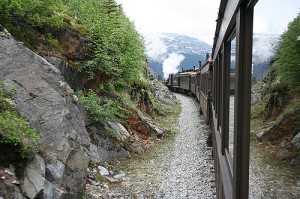 Being the two biggest cities in Alaska,
Being the two biggest cities in Alaska,